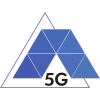TRIANGLE has now formalised its certification process, defining its requirements and how the process is used. This certification process has been documented (in a document called Deliverable D2.2) and describes how a 5G application developer, device maker or operator can go about acquiring the TRIANGLE mark certification.
TRIANGLE firstly reviewed existing certification schemes in the mobile world, focusing on the specific stipulations and certification process of each scheme. Based on both this study and requirements specific to the TRIANGLE 5G testbed, the certification requirements and process were defined to explain to vendors how to obtain the TRIANGLE mark for their 5G products.
TRIANGLE also includes the Test Specifications (description of the tests that will be run on the products) relevant to 5G systems and other certification information such as the product scoring process in the D2.2 document.
The TRIANGLE testbed has been created to test 5G and pre-5G applications, mobile device and IoT devices. A number of use cases have been defined for TRIANGLE Certification examples of which are gaming, augmented reality, streaming service, smart metering, connected vehicles etc. as can be seen in Figure 1 TRIANGLE Certification scheme. Use cases run on the device or application are tested and scored resulting in the TRIANGLE certification.
Figure 1 TRIANGLE Certification scheme
Any vendor wishing to certify its 5G device or application can now submit an application for certification form to TRIANGLE indicating the product functionality. They also need to send a list of features, use cases and scenarios supported by the product as well as a product user manual or brief description explaining how to use the product for testing purposes.
The vendor can pre-book the TRIANGLE testbed if they wish to perform the testing themselves. The vendor will select a TRIANGLE Test Lab to perform the testing. The vendor then sends its product to the Test Lab before the testing commences. This Test Lab will create a list of test cases (called the Test Plan) to verify the product performance and will execute on those test cases. After executing all the test cases in the Test Plan, the Test Lab will list the results of the tests in a Test Report. The Certification Body will assess the Test Report together with the testing evidences generated by the testbed and will verify whether all certification requirements are met.
Provided that the product reaches its specified minimum performance, the Certification Body will issue a TRIANGLE mark with a scoring according to relevant characteristics, as well as a global scoring. For example, these characteristics might be energy consumption or user experience. This completes the certification of the product and the product information will be added to a list of TRIANGLE certified products.


